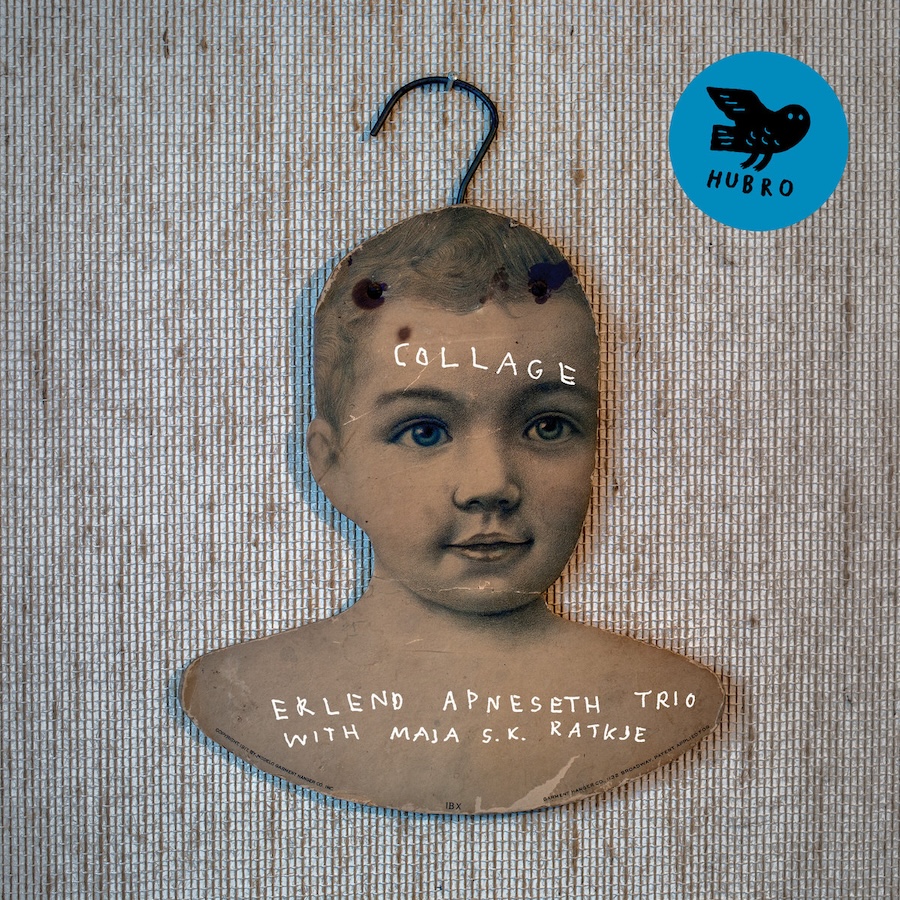
The relationship between Nordic traditional music and the broader churches of experimental composition and free jazz has shifted somewhat since Erlend Apneseth and his Trio first started making albums for Norway’s influential Hubro label. Given the consistently high quality of those albums and the critical acclaim they have attracted, it’s no great leap to suggest that Apneseth has had an important part to play in that shift. It is a movement away from virtuosity for its own sake and towards a more holistic and collaborative approach to music making, one that doesn’t celebrate the past or the future independently of each other, but sees the two as part of a continuum. This is exemplified by a keen affinity with the natural world, a patient but never dull attitude to recording that seems to recognise music as a kind of palpable measure of deep time.
It’s no surprise to learn that the Trio’s new album, Collage, sees them move further into experimental territory. And it’s no surprise to learn that they have taken the opportunity to collaborate with Maja S. K. Ratkje, a singer and composer firmly embedded in the European avant garde but with more than a working knowledge of early music and the baroque. Perhaps least surprising of all is how well these seven new songs work.
There is an improvisational current running through Collage from the start – indeed, the collaboration began life as a one-off improvised concert performance, and these tracks are reworkings of those explored in that 2022 performance. As a result, they exist in a kind of paradoxical state: they are simultaneously improvisations and compositions. Something akin to tension is produced, a kind of heightened musical state in which no one involved – listener or musician – takes anything for granted. The first seconds of opening track Tre Vegar have an almost choral feel, but the landscape soon becomes spooked and uncertain as the strange language of free improvisation takes over. Rattling percussion, drones and high, wind-scarred fiddles are the order of the day, until a bizarrely satisfying bubble of electronics takes over for a short spell. This, in turn, is usurped by the sound of water: a babble that grows into a gush. All the while, the drones and the synths provide a tense backdrop. The song resolves into the short second track, the chattering, clattering Fjernklang, where the percussion seems like it is being played by the natural forces of wind and rain rather than by human hand.
Spor Etter Spor (Mellom Oss) strips away the clangour and allows Ratkje’s vocals to take centre stage. Seemingly cut up words and numbers are spoken over wordless, extended vocal phrases. The musical accompaniment here is soft and fluid: even the percussion has the soothing nature of a breeze rattling the masts of sailing boats. The result is both meditative and disconcerting. Kvi Søve Du creates a kind of musical tableau that at first is reminiscent of early industry but, with the introduction of Ratkje’s heavily treated vocals, becomes more like a bewitched dream. Apneseth’s spiralling fiddle emphasises the ancient, pagan influences. The whole thing is like an esoteric ritual heard from behind closed doors.
The ritual feel continues with the yelped vocals and Øyvind Hegg-Lunde’s tribal percussion on the manic, propulsive Ein Annan Himmel, which sounds like something Amon Düül II discarded for being too weird, or perhaps the Popol Vuh soundtrack to a lost Werner Herzog film. Fuglane ii (Norwegian for ‘birds’) is more restrained but no less alluring. The initial musical landscape has traces of Japanese classicism, but Ratkje’s singing – her words stretched to breaking point and chopped into jagged pieces – situates the piece in the canon of modern experimentalism, and the atonal crunches and electronic bleeps navigate things into intense and almost frightening territory. Here and elsewhere on the album, it can be hard to spot the moments when Ratkje’s singing transitions into synthetic sound, and this only serves to increase the delicious tension – and the sheer wobbliness – that these four musicians do so well to maintain. After all this, the closing track, Atterklang, feels like an extended exhalation, as if the listener is only now being released from some darkly glimmering cave. The strings become sedate; the heartbeat slows. You realise, despite the improvisatory fabric of Collage, just how much control the album’s creators are able to exert over mood and timbre and all-round listening experience. It is a masterful, almost mesmeric achievement.


